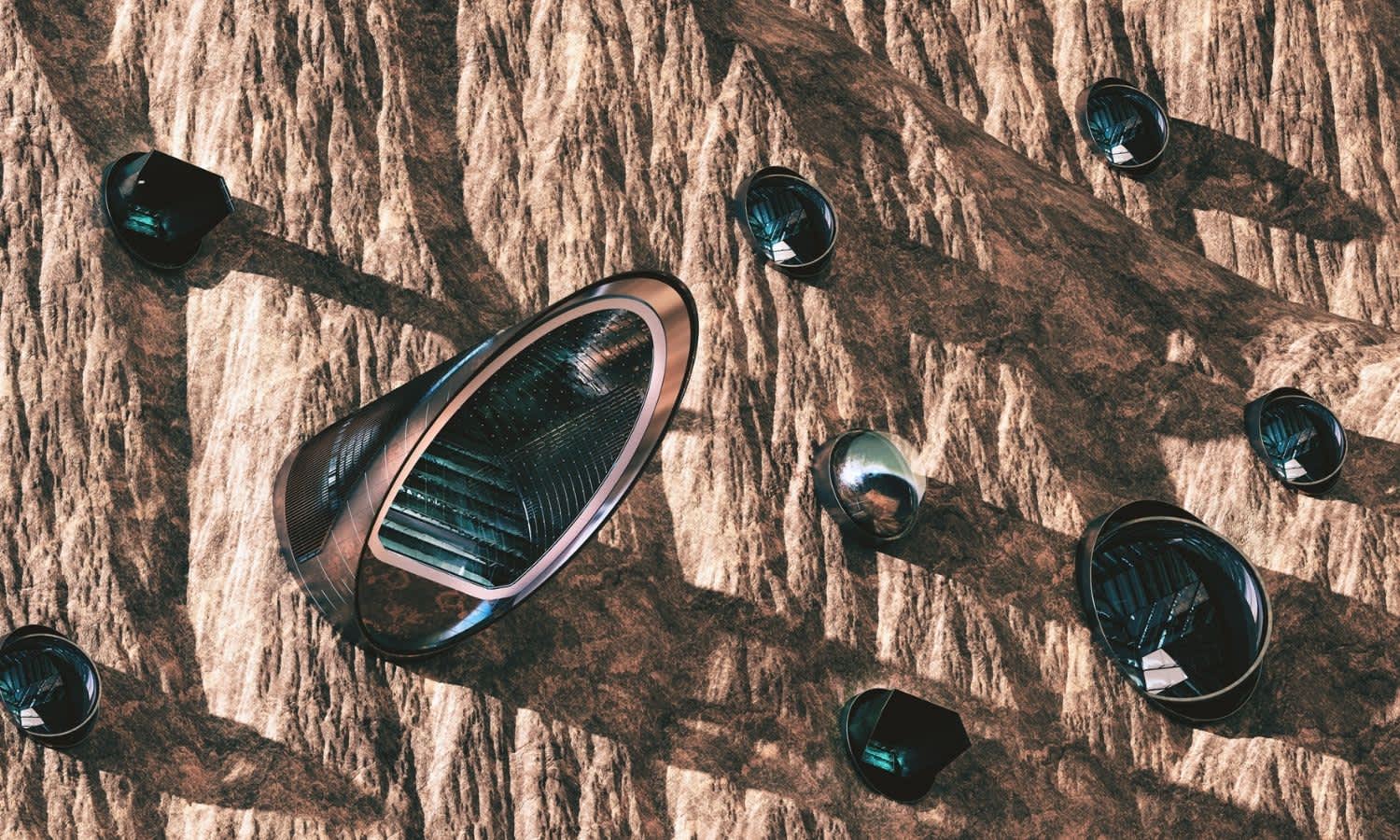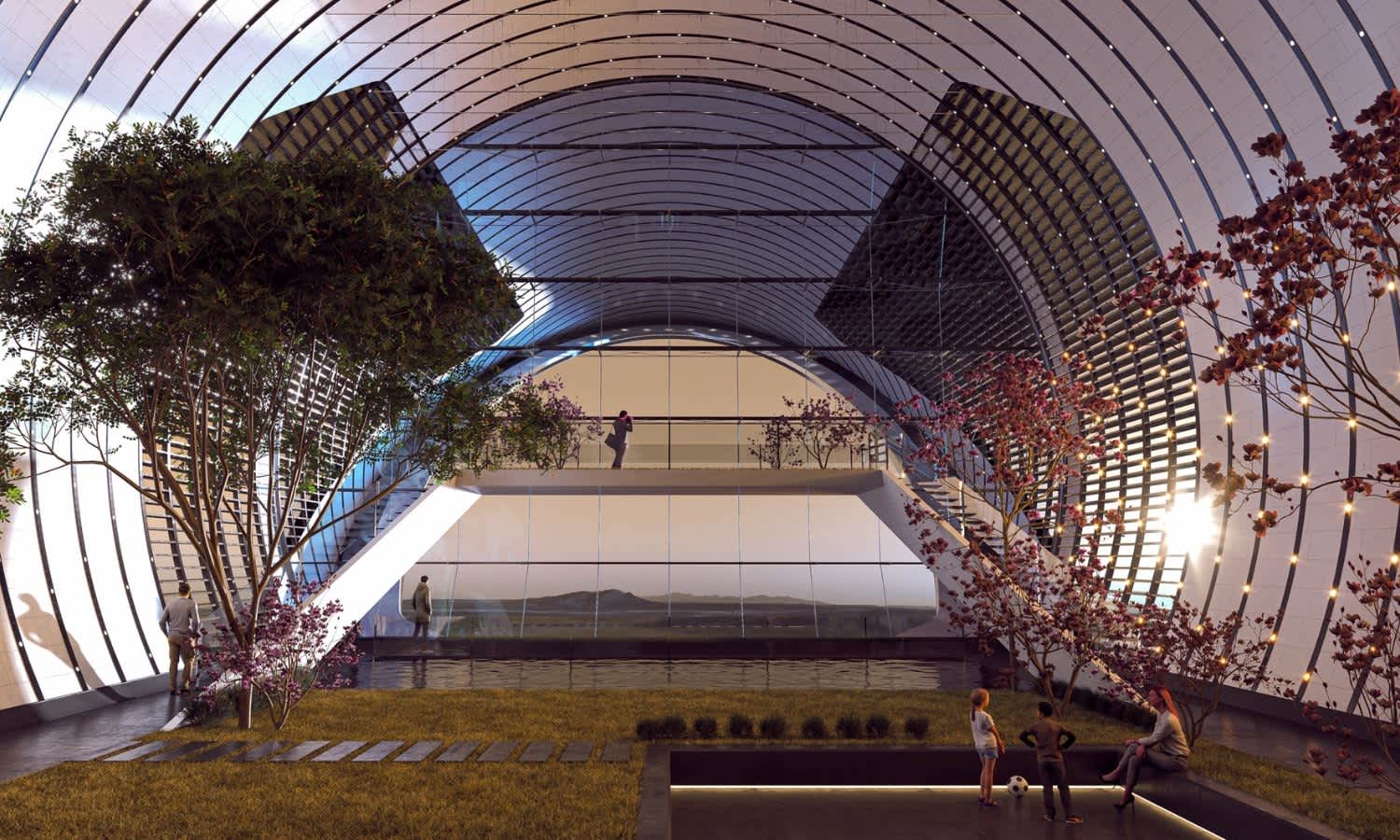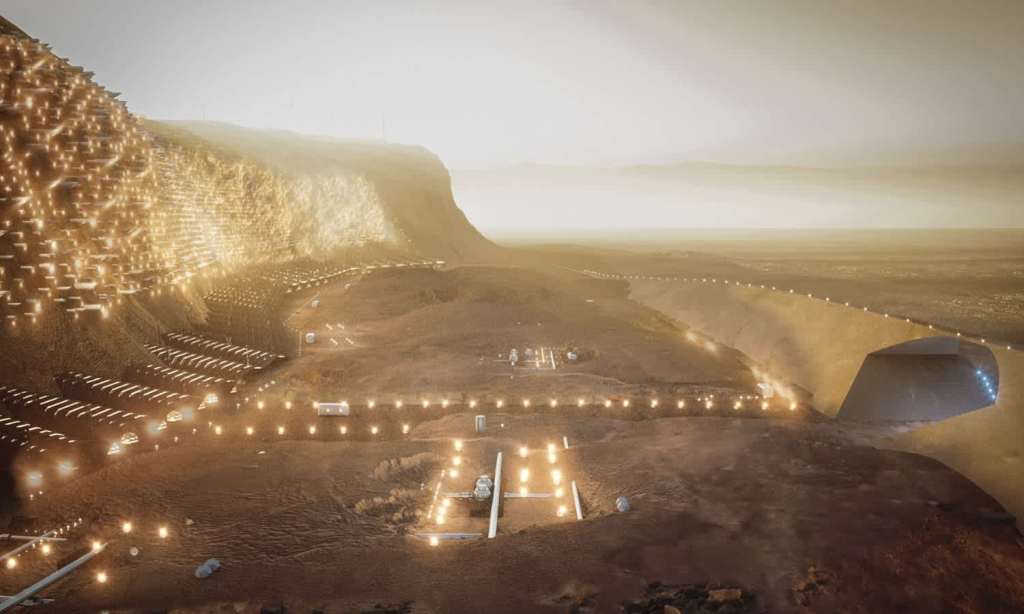The future is really starting to feel like now, with architecture studio ABIBOO having released its conceptual designs for a self-sufficient city on planet Mars.
The city, named Nüwa, has been predicted that it could be successfully built in 2054, which although sounds like an eternity, is actually only 33 years away.
Set within a cliff on Mars, Nüwa was designed for non-profit organisation the Mars Society (a space advocacy group), set to be the first permanent settlement on Mars.
The vertical city, which would aim to house 250,000 people, is designed to be embedded into the side of a cliff, built using materials available on Mars. A system of interconnected tunnels would be bored into the Martian rock on Mars, with some tunnels projecting from the cliff face to let light into the city and the area at the top of the cliff would be used for growing food.

The tunnelling technology used to build Nüwa is “already available on Earth”, but steel obtained by processing water and CO2 found on Mars will need to use a system that is yet to be developed.
While the architects believe that hydroponic systems for making food and solar generation systems for making electricity already largely exist, they see manufacturing breathable air as the biggest technical hurdle to overcome to make the city viable.
It’s also noted that transporting goods and people to Mars as well as the funding needed to build the city the ‘right’ way could pose potential barriers, but ABIBOO strongly believes construction could begin in 2054.
Founder of ABIBOO, Alfredo Munoz, believes that building a permanent, large-scale habitat on Mars is feasible this century and that Mars may actually have more potential for settlement than the moon.
“Permanent habitats on the Moon that are self-sufficient would be challenging, including the lack of water and critical minerals,” he told Dezeen.
“On the other hand, Mars offers the right resources to create a fully sustainable settlement.”

Through his design of Nüwa, Munoz has acknowledged the challenges of designing a city that is functional to live in both physically and emotionally.
“Some past solutions for habitats on Mars propose exciting buildings on the surface of the red planet. The challenge with these solutions is that to protect effectively and long-term from radiation, the buildings’ skin needs to be thick and opaque.”
“Alternative past solutions on Mars are underground, located inside lava tubes or craters,” he continued.
“Such building configurations might provide a more efficient and safe technical solution than those on the surface. However, access to light is essential for humans’ psychological well-being, and spending long-term underground might not be the ideal solution.”
Read more stories from The Latch and subscribe to our email newsletter.







